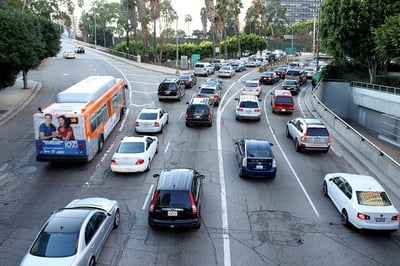 There is a lot of discussion lately about our aging transportation infrastructure, and the biggest hurdle seems to be the cost associated with potential projects and the struggle to fund them. As I watch these news stories, I find myself trying to problem-solve and almost always end on Practical Solutions.
There is a lot of discussion lately about our aging transportation infrastructure, and the biggest hurdle seems to be the cost associated with potential projects and the struggle to fund them. As I watch these news stories, I find myself trying to problem-solve and almost always end on Practical Solutions.
What are Practical Solutions? Nancy Boyd of the Washington State Department of Transportation recently provided a good overview to my colleague Paul Smith. Essentially, it is about maximizing the value of your project’s budget, i.e. using your limited funding in such a way as to obtain the largest benefit. Practical Solutions can lessen the footprint, lower the costs of a project, and many times they are simpler to implement than standard improvements.
Agencies can benefit greatly by implementing Practical Solutions approaches on their projects. You probably face the same challenges as most agencies: The list of needed improvements grows as the budget dwindles. I can imagine how frustrating that must be. Practical Solutions could be your best solution for meeting this challenge.
As an example, when an intersection or traffic corridor drops to a failing level of service, the response from a Practical Solutions standpoint could be to look at it from a traffic engineering perspective first. Sometimes a simple factor like signal timing is the root cause of an issue. It is amazing to see how altering timing by a few seconds can significantly change the level of service. I often sit at intersections waiting to turn left and wonder how efficient that signal could possibly be, what the level of service for each turning movement could be, and how a minor change in signal timing can improve vehicle delay. Along with signal timing, making a flashing yellow arrow for left turns can increase the level of service for that turning movement. These are simple and cost-effective fixes that improve performance.
Not all Practical Solutions are that simple, of course. Sometimes the solution is more complex, yet still practical and budget-friendly. For instance, roundabouts can be a good choice to reduce the delay of vehicles. In certain situations, roundabout footprints can even be contained within the right of way, which is a great alternative to adding lanes where the risk of right of way acquisition can come into play.
Sometimes the Practical Solutions approach will conflict with existing engineering standards. Standards have been in place for engineers to follow for many years, but at times following the standards may not be the most efficient way to complete a project. That’s because the standards are focused on what’s best in most general situations, whereas Practical Solutions are specifically focused on what’s best for the individual project. In this era of constrained transportation budgets, it is important that agencies consider ways to provide flexibility where appropriate. It would also be beneficial to implement new standards that follow Practical Design methods, if possible.
As my colleague Kris Strickler mentioned in his blog “Transportation Funding by the Numbers,” the cost of projects has skyrocketed but funding is not increasing, and therefore projects must be done in the most cost effective manner. The end goal is improving our current systems. Practical Solutions can’t be used to fix everything, but if we’re willing to think outside the box, look at the best solution for each specific situation, and allow appropriate flexibility from general standards, they can go a long way toward meeting these challenges.
Is your agency using Practical Solutions to meet budget crunches? Let me know how it is working by leaving a comment below.
Photo credit: Prayitno


Leave us a comment below